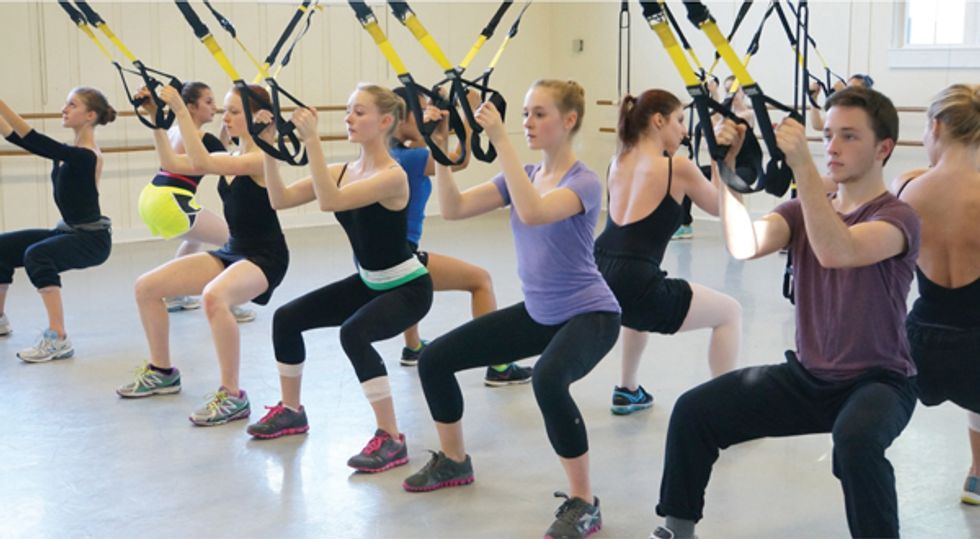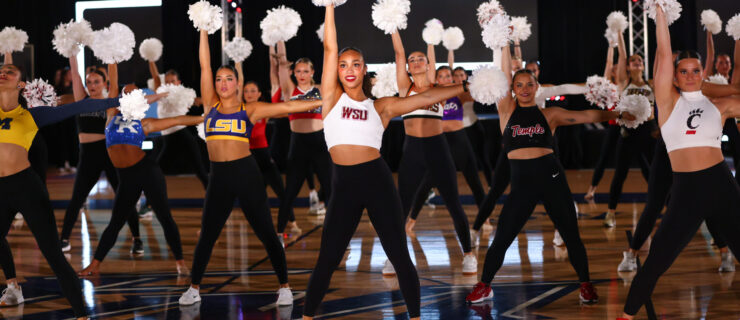Four Rules of Injury Prevention + Jymmin
Pain, Pain, Go Away…
Injuries: Many dancers accept them as a necessary evil, just “part of the job.” But what if they didn’t have to be? Walnut Hill School for the Arts in Natick, MA, has developed an injury prevention program in collaboration with doctors from Boston Children’s Hospital. Dance Spirit chatted with the school’s director of dance, Michael Owen, and director of physical therapy, Susan Kinney, about four rules of injury prevention.

Students at the Walnut Hill School for the Arts cross-train in a TRX Suspension Training class targeted at dancers. (Photo by Amanda Grazioli)
CROSS-TRAIN.
“Bodies crave muscular balance,” Kinney says. But dancers tend to work the same muscle groups repeatedly and ignore others, which can lead to injuries. Through proper cross-training, you can strengthen underused muscles, while also stretching overused muscles.

Talk to your teacher at the first sign of injury. “If you catch it early, it’s gone early,” Owen says. (Photo by Nanette Grebe/thinkstock.com)
STUDY ANATOMY.
“It’s important for dancers to be aware of which muscles they’re using, and why,” Owen says. An anatomical understanding of dance will help you internalize your teacher’s corrections, because you’ll appreciate the physical consequences (injuries!) of improper technique.
MODIFY.
“There’s no shame in modifying!” Kinney stresses. Modifications to technique, such as not going on relevé due to foot pain, allow your body to heal without keeping you from the studio.
LISTEN TO YOUR BODY.
“The body will know when something isn’t right,” Kinney says. Early symptoms of pain and discomfort are warning signs of potentially more serious injuries.

(Illustration by Eastnine Inc./thinkstock.com)
Did you know?
Controlling your playlist while you exercise can have real benefits. Researchers at the Max Planck Institute for Human Cognitive and Brain Sciences found that individuals who controlled the music they listened to were able to exercise longer than those who passively listened to music playing in the background. The researchers call this effect jymmin, a mix between gym and jamming. So next time you’re feelin’ the burn, make sure you’ve got your best playlist ready to go

(Photo by Dave King/thinkstock.com)
Don’t pour out the liquid at the top of your yogurt cup! It’s filled with nutrients like calcium, vitamin D and probiotics. If it weirds you out, try stirring it in or saving it for a smoothie.




